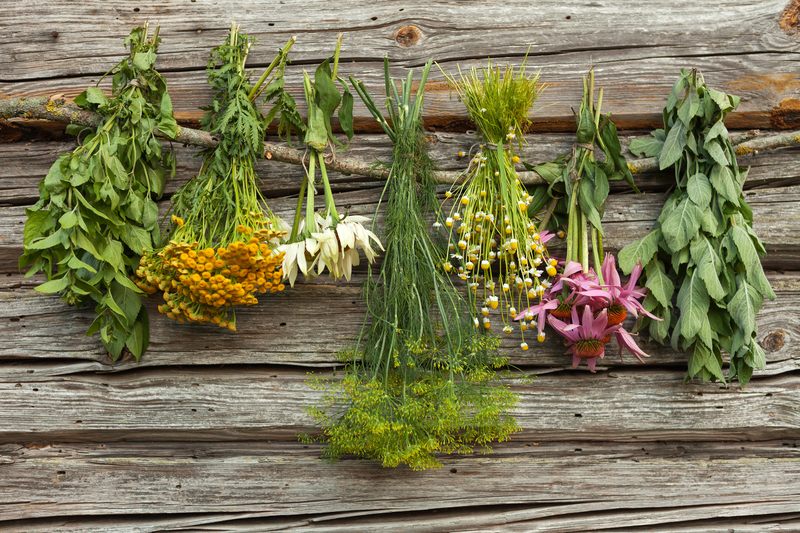Herbs are a gift from nature and in many cases, can be as powerful as any synthetic substance when addressing common ailments.
The following are some basic recipes everyone using herbs should know.
How To Make Tea From Herbs
A good rule of thumb is to use about 1 tsp. of powdered ingredients or 2 tsp. per cup of tea if you’re using dried. Double that if you’re using fresh ingredients. If you’re using them just for pleasure, you can adjust the amount to suit your taste. If you’re making a medicinal tea, you may use up to 1/2 cup of ingredients per cup, depending upon the recipe.
Start with boiling water, then put your ingredients in to steep, or put them in the cup and pour the hot water over them. Cover and let them steep for 10-20 minutes, then strain if necessary. Many medicinal tea or infusion recipes will call for longer steeping in order to infuse more of the plant benefits into the water. Enjoy!
How To Make A Decoction
Bring your water to a boil and add the ingredients. It’s best to crush the ingredients a bit to release the oils and other benefits. Cover and reduce heat to a slow simmer. If you’re using smaller pieces, simmer for about 20 minutes. If using larger chunks, simmer for up to an hour, depending on what the recipe calls for.
When it’s finished steeping, strain the herbs out and it’s finished.
The reason that you want to cover the decoction while it’s simmering is that you want to essential oils to drip back down into the decoction. A rule of thumb for amounts is a little over 1 tablespoon of dried ingredients per cup of decoction. If you’d like a stronger decoction, use more herbs, boil it longer, or let in steep overnight depending upon what the recipe calls for.
How To Make A Tincture
Tinctures are made when an ingredient isn’t particularly soluble in water or when you want to store it longer. The process uses alcohol in the form of vodka or rum (which needs to be at least 80 proof, or 40 percent alcohol), or 90-180 proof grain alcohol.
You’ll need dark colored bottles with tight-fitting corks or lids because sunlight damages the medicinal value of the tincture. If you don’t have dark bottles, your tincture needs to be stored in a dark place.
Making a tincture is a simple process but it’s important that you use the proper amounts of alcohol and dried plants. The ratio should be 1 part plant material to 4 parts liquid. To make it easier, use 2 ounces of plant material for every 8 ounces (1 cup) liquid. It’s important that you measure the plants by weight, not volume because 1 tablespoon of dried basil will obviously be much larger in volume that 1 tablespoon of bark.
The percentage of alcohol is important as well, to ensure that you get a tincture with at least a 1-year shelf life. The liquid needs to be around 40 percent alcohol, which means that if you use 80 or 90 proof rum or vodka, you can use it as-is, but if you use grain alcohol (180 proof), use 1/2 cup alcohol and 1/2 cup distilled water.
Add the ingredients to your bottles and make sure that the cork or lid is tight. Store in a dark area. Shake once daily until the tincture is ready. If you’re using soft material such as leaves or powder, the process takes about 2 weeks. Harder matter such as bark or woody stalks will take a bit longer: about a month.
At the end of the processing time, strain the mixture through a strainer or cheese cloth to remove the solid matter, pressing on the plant matter (wringing if you’re using a cheese cloth) to get all the liquid out. If you used powder, stop shaking the tincture 3 days before it’s done. The powder will settle to the bottom and you can just pour the liquid off the top through a cheese cloth.
Poultices
These are super simple because the crushed herbs are either placed directly on the wound, or between two pieces of cheese cloth or bandage, then placed on the wound. You may need to add just enough water to dampen the herbs.
Then wrap the treated wound with a light cotton bandage to keep the poultice on the wound. You can even use a large leaf to hold the poultice if necessary.
These are just a few of the many recipes you should use when working with herbs; as you can see, herbs provide much more than just spicing up foods.
For as long as humans have been on the planet, we have used herbs to heal and soothing ailments as well as to nourish the body and make food tastier.
To learn more about herbs, including some drying methods and additional recipes, check out Survivorpedia.

Nicole McCloskey Sicking